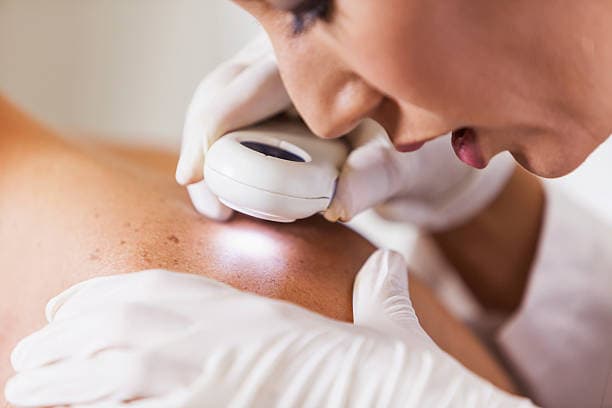
Exploring Effective Options for Melanoma Skin Cancer Treatment
10 Apr, 2024
 Healthtrip Team
Healthtrip TeamMelanoma skin cancer is a serious and potentially life-threatening condition characterized by the abnormal growth of melanocytes, the pigment-producing cells in the skin. It is the deadliest form of skin cancer, as this type of cancer is prone to spread quickly to other parts of the body if not detected and treated early. Understanding the available skin cancer treatment options for melanoma is crucial for effectively managing this condition and improving patient outcomes.
Understanding Melanoma Skin Cancer
Melanoma derives from malignant proliferation of melanocytes - the cells that are responsible for melanin molecules production (the pigment that gives the skin color). While the farmers are the exact reason for the occurrence of melanoma is not fully known, exposure to UV radiation from sunlight or tanning beds is considered as a major factor. Besides the factors that we have discussed above there are also some other risk factors such as family history of melanoma, presence of many moles or of atypical moles. Besides, people with light colored skin, eyes blond hair or red-colored hair are more vulnerable to developing melanoma skin cancer.
Transform Your Beauty, Boost Your Confidence
Find the right cosmetic procedure for your needs.

We specialize in a wide range of cosmetic procedures

Skin melanoma can appear at different stages, ranging from localized tumors not going beyond the skin’s bounds to metastatic (blossomed) disease, spreading to distant organs’ tissues. Detection of melanoma at the earliest stage is the chief feature of the successful treatment and survival rates, which of course are two the most important realm of this issue.
Surgical Treatments for Melanoma
As it is, surgery is the main cure for early stages melanoma, in which the whole tumor with a margin of surrounding healthy tissue is taken out. Several surgical techniques may be employed, including
1. Wide Local Excision: Through this technique, the tumor is removed along with some of the healthy tissue around it to make sure that all the cancer cells have been completely removed.
2. Mohs Micrographic Surgery: Mohs surgery is a particular approach entailing the removal of the cancer in the layers one by one while under microscopy each layer is examined until no more cancer cells are detected.
Most popular procedures in India
Atrial septal defect
Upto 80% off
90% Rated
Satisfactory

Coronary Angiogram a
Upto 80% off
90% Rated
Satisfactory

Coronary Angiogram C
Upto 80% off
90% Rated
Satisfactory

Liver Transplant
Upto 80% off
90% Rated
Satisfactory

Total Hip Replacemen
Upto 80% off
90% Rated
Satisfactory

3. Sentinel Lymph Node Biopsy: In fact, a sentinel lymph node biopsy maybe performed when the risk of melanoma spreading the nearby lymph nodes is high in hope to know if there were cancer cells in the lymph nodes.
Non-Surgical Treatments for Melanoma
Besides, the surgery, various types of non-operative therapies can be used in melanoma, particularly in the mastamitic disease. These include:
1. Chemotherapy: Chemotherapy, based on its drug injection, aims to destroy evolving out (the word should be developing, not evolving out) cancer or postpone it. On the other hand, the classical chemo-therapy may be less effective for melanoma; however, new chemotherapy drugs coupled with other kind of treatment might be instrumental in achieving better clinical outcomes.
2. Immunotherapy: Immunotherapy works by increasing the body’s natural immune response that not only sense malignancies but also destroy them as well. . Immune checkpoint inhibitors, their names are pembrolizumab and nivolumab, have demonstrated many successes in treating advanced melanoma.
3. Targeted Therapy: Targeted therapy drugs are aimed at accurate mutations or rehearsal of molecular pathways in melanoma cells. Compared to chemotherapeutic agents that are unspecific and are poorly tolerated, targeted therapy drugs like vemurafenib and dabrafenib that are mutation-specific are more tolerable as they are well-targeted.
Radiation Therapy for Melanoma
Radiation therapy is a treatment method which kills cancer cells or shrinks tumors using high-energy radiation beams. It can serve as the first line of therapy for melanoma in those cases, where, surgery is not considered as a choice, as well as in any adjuvant therapy after surgery to destroy any residual malignant cells. Types of radiation therapy for melanoma include:
1. External Beam Radiation Therapy (EBRT): EBRT can be delivered from a distance using a machine called the linear accelerator. This targeted and thus is to a minimum effective to preserve the health of the site nearby.
2. Internal Radiation Therapy (Brachytherapy): Radiotherapy by means of insertion of the radioactive material correspondingly at or nearby tumor site is referred to as brachytherapy. Thus, a larger dosage of radiations such as sorafenib can be delivered to the cancer cells and other healthy tissues can be exposed much less.
Adjuvant Therapies for Melanoma
Adjuvant systems are procedures further carried out after the main treatments, such as surgery, to minimize the possibility of cancer returning. These may include:
1. Adjuvant Immunotherapy: Those of immunotherapy drugs may be used as postoperative therapy to reduce the body's immune responses while aiding to prevent cancer recurrence.
2. Adjuvant Targeted Therapy: Unspecific medications for melanoma can be replaced by specific medicines which are aimed at the genetic mutations present in the cancer cells, reducing the possibilities of the cancer to relapse or metastasize.
Palliative care and holistic approaches such as psychosocial therapies play indispensable roles in cancer treatment.
A palliative care is designed to bring about relief from symptoms and improvisation in the quality of the life for patients with metastatic melanoma. Therapeutic interventions that address physical pain, emotional upheaval, including counseling and nutritional support, are all mandatory for holistic care.
Clinical Trials and Emerging Treatments
Clinical trials may be regarded as being of great importance for the development of a new melanoma treatment level and the examination of additional therapeutic agents. Enrollment of the patients into the clinical trials gives them the priority of receiving from latest and experimental therapies that are not available to general population. Among these, there are several promising approaches including adoptive cell therapy, oncolytic virus therapy, or their drug combinations.
Skin Cancer Treatment Follow-Up and Surveillance
Repeat clinic visits and agreed surveillance methods after melanoma treatment serve as a baseline to gauge for melanoma return and progression. The patients should take a skin examination, regular imaging studies and blood tests to make sure that there is no sign of the disease recurrence. Care management and the side effects of treatment along with keeping good health and body functionalities are among the major aspects of the post-treatment sessions after cancer therapy.
Support Resources for Patients and Caregivers
Dealing with the diagnosis of melanoma skin cancer can sometimes be too hard not only for patients but also for their families and caregivers. However, we are lucky to have a wide range of treatment resources, which can support us in each stage of the journey with information, guidance, and help with emotions. These resources may include:
1. Patient Advocacy Organizations: Organizations such as MRF and ACS provide useful support resources like magazines, messages, and educational materials for the diagnosis and treatment of melanoma.
2. Online Forums and Communities: The online communities and social media platforms act as the platform for patients and their caregivers to connect with the people who are also facing the similar thought processes, and exchange the information and provide emotional support.
3. Supportive Care Services: Many cancer centers and hospitals have supportive care services like counseling, nutrition counseling and integrative therapies to support patient’s physical and psychological challenges caused by cancer treatments.
4. Financial Assistance Programs: Some organizations will undertake to give patients’ financial help so they can pay for treatment, medication and everything related to these costs. Through these assistive resources, patients and caregivers can obtain pertinent information, find emotional support and feel motivated to face their melanoma treatment course with improved position.
Future Directions in Melanoma Treatment
Though recent progress has been accomplished in melanoma treatment for skin cancer, we still need future programs to explore new curative agents and to improve chances for the patients. Some areas of focus in melanoma research include:
1. Combination Therapies: The purpose of research here is to determine the more effective form of combination therapies by investigating response rates among patients who receive a treatment that combines immunotherapy with targeted therapy or radiation therapy or both among the treatments.
2. Precision Medicine: This field explores interaction of genetic testing and molecular phasing referring to exclusive genetic mutations in melanoma, curing the tumors in the delivery of personalized treatment strategies.
3. Biomarker Discovery: Determine novel biomarkers and predictive markers that can be used for treatment guidance, monitoring treatment response and predicting ripple effects to patient outcome.
4. Immunotherapy Strategies: Generation of the new immunotherapy methods that can be used in adoptive cell therapy and the antibody-based vaccine therapy to further support the body to eradicate melanoma is the other approach.
The research and development in the field for melanoma treatment does not stop. Rather, the area will be advanced and the long term of helping patients is set proper for its possible therapies.
Conclusion
In conclusion, melanoma skin cancer is a serious and potentially life-threatening disease that requires prompt diagnosis and appropriate treatment. By understanding available skin cancer treatment options, patients can work with their healthcare providers to develop personalized treatment plans that maximize effectiveness and minimize side effects. Regular follow-up and surveillance are essential for monitoring disease progression and detecting any signs of recurrence early. Encouraging readers to stay informed, proactive, and engaged in their care is vital for optimizing treatment outcomes and improving overall quality of life.
Wellness Treatment
Give yourself the time to relax
Lowest Prices Guaranteed!

Lowest Prices Guaranteed!





